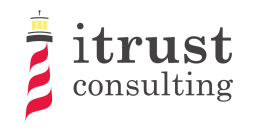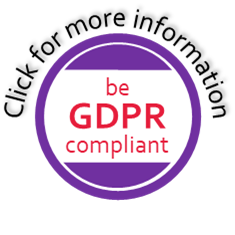We wish you a Peaceful Christmas and a Happy New Year 2024 Sending our wishes by email allows us to donate our end-of-year budget to welfare organizations: Caritas Luxembourg in support of the integration of refugees and asylum seekers; Fondation Air Rescue in support of investments for disaster preparedness.
Posts By: Ingo Senft
CyFORT, a series of cyber security tools available for anyone
Interview with Lëtzebuerger Gemengen, translation by itrust consulting. In a context of constantly evolving and increasingly sophisticated cyber threats, cybersecurity experts are not standing still, as demonstrated by the CyFORT project. Carlo Harpes and Arash Atashpendar, respectively Managing Director and Head of R&D/CTO at itrust consulting and itrust Abstractions Lab, explain why. ‘All CyFORT cybersecurity tools and their technical documentation will be made publicly available online as free and open-source software’. Can you briefly present the CyFORT project? Carlo Harpes: CyFORT, short for “Cloud Cybersecurity Fortress of Open Resources and Tools for Resilience”, is a research project aimed at developing a series of open-source cybersecurity software tools with a focus on cloud computing. As free and open-source software, all CyFORT cybersecurity tools and their technical documentation will be made publicly available online. These permissive licenses allow anyone not only to study our tools, but also to adapt, modify and customize them to suit their needs, without being subject to what we call vendor lock-in. Is there a specific tool already developed as part of this project? Arash Atashpendar: Of the six CyFORT sub-projects, today we’ll be focusing on the one that’s at the most advanced stage of development, namely C5-DEC, short for “Common Criteria for Cybersecurity, Cryptography, Clouds – Design, Evaluation and Certification”. C5-DEC aims at providing an impartial assessment of the security of IT systems and software in line with Common Criteria (CC), a set of internationally recognized standards (ISO/IEC 15408), as well as the complementary methodology ISO/IEC 18045, which deals with a common methodology for the evaluation of IT security (CEM). CC certification gives users the assurance that a product complies with the security guarantees it claims. C5-DEC consists of two key elements: a software package and a knowledge base containing guides and a wiki of key CC concepts. These elements form a coherent set, covering tools for CC, secure software development and security assessment of cyber-physical systems. How does C5-DEC improve the product development processes? Arash Atashpendar: The CC and CEM standards, which are complex and the result of the efforts of multiple countries since 1980, contain extensive security requirements and are methodologically arduous. Certification processes, involving suppliers and laboratories, are often costly and time-consuming. C5-DEC makes these procedures more accessible and efficient, with a CC database, tools for evaluation reports, and checklists. It supports analysts and designers with comprehensive databases for safety design and evaluation. Are… Read more »
itrust consulting presents CyFORT
Interview with Lëtzebuerger Gemengen, translation by itrust consulting. As the threat of cyber-attacks increases, cybersecurity experts are increasing their innovation capacity to protect public and private data as effectively as possible, which is done in the CyFORT project. We spoke to its creators, Carlo Harpes and Arash Atashpendar, Managing Director and CTO/Head of R&D respectively at itrust consulting and itrust Abstractions Lab. “Our solutions make it possible to improve the security of an organization and a product using open source tools and standards-aligned methods”. Can you present us CyFORT? Carlo Harpes: CyFORT is a research project aiming at developing a series of open-source cybersecurity tools, also suited to Cloud Computing. CyFORT stands for “Cloud Cybersecurity Fortress of Open Resources and Tools for Resilience”. This work is part of a collaboration with European and local partners, and the results of the project will be published and made freely available to interested parties. Our solutions will help to improve the security of an organization and of a product thanks to open source tools and standards-aligned methods. Arash Atashpendar: CyFORT targets both public sector institutions and private sector companies that want to improve their software development lifecycle processes, integrate information security and risk analysis methodologies into their organization, and secure their infrastructures, tools and products. What exactly is meant by “open source”? Carlo Harpes: As the name suggests, the source code is made available to the public via open access platforms. This allows development to continue in a collaborative way. Anyone can study the code, modify it and distribute it freely, while respecting a few criteria set out in the licences. In this way, anyone can study our solutions without depending on us, or on any third-party platform, and can continue to improve them. Arash Atashpendar: We also use open source solutions to create increasingly efficient, transparent and flexible tools. Used in sometimes critical areas, these three virtues are more than necessary. As mentioned, the source code for our tools will be published using free or open distribution software licences, and will be made available. How do you conceive such a project? Arash Atashpendar: We recycled good and bad experiences from previous research projects: in CRITISEC, we designed an intrusion detection solution that proved to be ineffective because the underlying algorithms developed as part of a thesis proved insufficient in our tests. In addition, multiple industrial software development projects have enabled us to… Read more »
The dissatisfied CISO – a necessity for sustainability
Inspired by the reporter.lu 2021 review, I have adapted a quote by the investigative journalist Hans Leyendecker to my role as Chief Information Security Officer (CISO) in my New Year’s greeting: ‘A good CISO is an unsatisfied CISO. No one who is completely satisfied is capable of implementing security’. This sentence has comforted many internal and external CISOs I have worked with in 2021: Guillaume, Ingo, Laura, Marc, Matthieu, Patrick, Yannick… We often feel like a troublemaker when we point out procedures that are not followed, common security practices that are considered too complicated, good reflexes that have been abandoned due to lack of time. We confess our uncertainty about risk analysis or our pessimism if we survive without our advice being followed… But we have all learned that to succeed, we need a positive spirit, openness to new technologies, autonomy, creativity, and above all an year for market changes. This is generally what CISOs do: they follow the latest recognized standards, try to convince, coach, implement artificial intelligence in network supervision… But their role is also to find vulnerabilities, to set social engineering traps, to insist on good documentation avoid future errors and loss of know-how, to require traceability of decisions and acceptance of risks (without embellishment), thus ensuring sustainable decisions, instead of justifying preconceived ones. The CISO is thus the right ally for a CEO who is looking for the best decisions in the face of new challenges. It is by disagreeing with an observed security that the CISO stimulates to find better. And his persistence avoids risks: services started without an adequate agreement on responsibility, too fast migration to the cloud creating dependency for a short-term advantage, open doors to cybercrime, resignation in the face of internal negligence. It avoids downtime or costly replacements or fixes. Fortunately, it is not only CISOs who are holding back. A courageous CEO recently confessed to me that he often finds himself in the position of putting the brakes on projects in which the customer’s view, financial feasibility, security, legal compliance, etc. have been neglected. Enthusiasm does not guarantee success. For sustainable projects, managers cannot escape from working with CISOs and taking care of security and data protection themselves. And there are often CISOs who come up with interdisciplinary and creative solutions, sometimes simpler than expected and standing in contrast to the flagship products that do everything but work efficiently without… Read more »
GDPR: Do you have a PIMS that holds up?
Interview with Lëtzebuerger Gemengen, translation by itrust consulting. On 28 May 2018, the General Data Protection Regulation (GDPR) came into force in the EU. Three and a half years later, many organisations are slow to comply, considering it too complex. For Carlo Harpes, the situation is worrying. The Managing Director of itrust consulting recommends PIMS, a Privacy Information Management System, helping companies in order to comply with the GDPR requirements. Explanations. What is a PIMS? A ‘privacy information management system’, abbreviated ‘PIMS’ even in French, is an ‘information security management system that manages the protection of privacy as potentially affected by the processing of personal data’. Personally, this is what I would have called a ‘management system to protect personally identifiable information’ and I would present it as a way to comply with the GDPR. To implement this, there are 1,001 solutions, usually valid for small organisations where data protection is not the primary concern. But for the past 26 months there has been one PIMS, which has been described so precisely that organisation can be certified on this basis, the one documented in ISO/IEC 27701. Who needs it? 3,5 years was not enough time for most organisations to comply with the GDPR. How many have not appointed a DPO (although this is a legal requirement for any public entity)? How many do not have a register of processing that complies with the requirements? How many cannot prove to the CNPD their compliance with the principles of the GDPR, including the one requiring ‘appropriate technical and organisational measures’? Faced with the difficulty of knowing what is appropriate and how to demonstrate it, leaders (policy makers, mayors, heads of administration, CEOs and manging directors), often give up and hide behind the non-compliance of their neighbours. From my observations, this situation is worrying, and only the CNPD, which has the obligation to sanction, should be aware of this state. All the organisations involved here would have benefited from this PIMS. Who defined this PIMS? The Luxembourgish authority ILNAS, which I represented at ISO in multiple expert meetings dedicated to this standard since 2014, was arguing with its European partners for a fast and fully GDPR compatible standard. To support compliance with these requirements, we have made numerous suggestions for improvements to the overly complicated numbering and certain overly cumbersome wording. In France, the CNIL has welcomed its participation and encourages the adoption… Read more »



